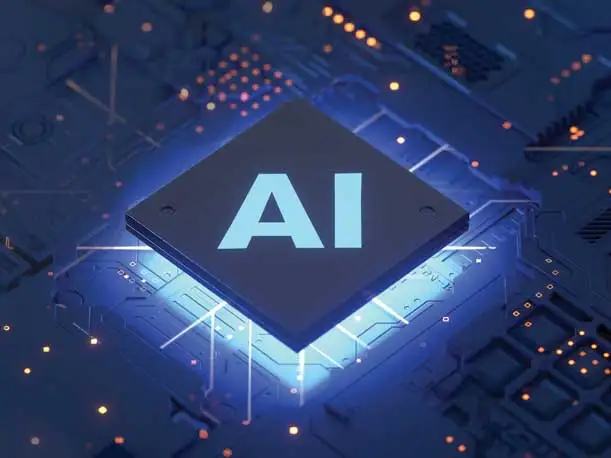Google Cloud: 5 AI Trends And Tips To Win GenAI Deals In 2024
Google Cloud’s global partner ecosystem leader Kevin Ichhpurani breaks down the five steps to win new generative AI deals and customers in 2024.

Google Cloud shifted its product roadmap and partner sales charge towards generative AI in 2023 with no plans to pivot the company’s strategy in 2024.
The revenue growth and customer stickiness Google Cloud partners can achieve this year by winning generative AI deals is the biggest services opportunity the channel has ever witnessed, Google Cloud’s partner ecosystem leader Kevin Ichhpurani tells CRN.
“Transforming a company’s business using generative AI and analytics is a much higher value service versus just lifting and shifting VMs because you’re significantly impacting the business,” said Ichhpurani, Google Cloud’s corporate vice president and head of global ecosystem and business development.
“If you can help a pharmaceutical company redo the way they do drug discovery, you’re talking about billions of dollars getting drugs to market faster,” he said. “You can help the insurance company rethink the way they do claims and cut out all the arduous paper processes. Or have a bank improve its anti-money laundering process. We’re talking about billions of dollars of impact.”
[Related: AWS, Microsoft, Google Lead Gartner’s Cloud Services Magic Quadrant]
Google’s GenAI Push In 2024
Ichhpurani is a critical leader in Google Cloud’s AI strategy to enable partners to win new GenAI customers and drive sales by enabling them to be an AI MSP, which specializes in providing lifecycle AI services for businesses of all sizes.
Last year, Google Cloud launched a new portfolio of GenAI products including Vertex AI, Model Garden, Duet AI, and a new AI-powered collaborator, just to name a few. By leveraging all of Google’s new generative AI offerings and capabilities, Google Cloud partners have the ability in 2024 to grow customers’ top line while also making improvements to the bottom line with GenAI solutions.
“When you’re at the C-suite and you’re really impacting the business’ top line and making massive improvements in the bottom line—there’s a much bigger services opportunity. So that’s what we’re very focused in on: building out that ecosystem,” said Ichhpurani.
In an interview with CRN, Ichhpurani explains the steps partners can use to win generative AI deals this year, upcoming channel incentives in 2024 and enabling the next-generation AI MSP.

Step One To Winning GenAI Deals: Identify Use Cases With Low Risk, High Impact
What customers are saying is, first of all, they need help from our partners in terms of identifying what use cases are best for them right now.
Customers are asking, ‘What are the use cases in my company that are going to have the biggest impact?’ You can almost think of it as an ‘X’ and ‘Y’ axis graph. They’re looking at which ones have the biggest use case impact, but also what the risk is. Because there’s different levels of risk across different use cases.
So they’re saying, 'OK, what’s that trade off of the highest impact and lowest risk low so I can start with low hanging fruit and then work my way through this to get started.’
That is kind of step one on what customers are looking for. So it’s about: how do you identify the use cases and then prioritize the use cases.

Step Two: Creating A Proof Of Concept, Data Foundation
After you identify the use cases, then customers are looking for a company that can help them do the proof of concept. They need a lot of support in this journey of, ‘Do I have the right talent? And how do I upskill the talent in my organization? Who can help me with knowledge transfer? How do I build an efficient development process internally, etc.’
They’re looking for a foundation of the house to build these use cases. The foundation of the house is the data foundation.
I mean, if you’re building something simple, like just simple chatbot, this doesn’t apply. But if you’re talking about something more complex like, ‘How do I rethink the way I do drug discovery? Or my core processes around insurance claims?’—you’ve got to get the data foundation.
That includes everything around, ‘Do I have the right data? Have I labeled the data? Have I taken taking care of data duplication?’
So the data engineering is what they’re really asking for. Because you can’t deliver, for example, the roof of a house unless you have the foundation. That’s what customers are asking for in spades is a data foundation.

Step Three: Governance And Data Privacy
The next thing customers are looking for is, ‘Help me with the governance. How do I make sure that I don’t have a bias in my model that could be harmful to us?’ Those are the things that businesses are really focused on.
Then of course data privacy. ‘How do I make sure my data doesn’t escape out into the community?’
Step Four: Drive Change Management
Then there’s a huge opportunity around change management.
In the past, for example, we’ve all gotten computer generated junk mail before. With generative AI today, we can actually leverage a customer’s CRM system and a customer loyalty information system.
Let’s say you’re a clothing store. You can email a customer saying, ‘Joe, you were in last week. You bought these black pants. Here’s a matching black sweater that we have, and it’s on sale. If you come in by 5 p.m. tomorrow our associate you saw is here to support you.’
You would never even know that that’s computer generated. You could send 500,000 out of these per day, and they can all go to individuals’ completely custom tailor. Now, that’s incredible. The response rate would be so much higher versus junk mail.
However, you would need to think about, ‘How do I transform my entire marketing department? And how do I move those resources to focus on other value-added activities.’
So the customers are saying, ‘Help me with the change management.’ So it’s not just about deploying GenAI, but helping customers drive the change management workforce after they deploy AI.

Step 5: GenAI Lifecycle Management
Customers want somebody who is not just going to train an AI model, but they’re going to continue to refresh that model and update that model.
So this next generation of MSPs that our customers are asking for is like an AI MSP that maintains that model, trains the model, refreshes the model, and makes sure there’s not bias in the model. It’s not a one-time thing. It’s an ongoing thing.
Customers are saying, ‘I need an AI MSP because I need somebody to constantly retrain that model, refresh that model, and continue to update the data pipeline.’ Sometimes the models start to drift and new data starts to come in, so you need to continually retrain the model.
That’s where we see as a really a big opportunity to manage the entire AI lifecycle and data lifecycle. … Companies are trying to rethink their entire business using generation AI. That’s a huge opportunity for the ecosystem. I’ve never seen an opportunity so large in my life for the ecosystem.

Kevin Ichhpurani On The ‘Next Generation’ AI MSP In 2024
Where we see the biggest opportunity for MSPs is this next generation of MSPs, like an AI MSP.
Customers are saying, ‘Hey, I don’t have the expertise in-house to build these AI use cases, but I want you to not only build it, I want you to maintain it for me.’ For example, ‘I’m looking at object defect detection of computer components on the shop floor. I want you to train that model for me. I want you to get my data foundation in order.’
There’s a huge opportunity for services partners because, for the more complex AI use cases, you’ve got to get your data foundation in order. You’ve got to make sure you have the right data, you have to eliminate deduplication, you’ve got to ensure that you label your data, you’ve got to constantly refresh your data, and you got to retrain the model because the model will start to drift over time. So this is like almost this next generation of MSP opportunity that will emerge.
We’re already seeing several of the partners that are doing this, Accenture being one of them. But large and small partners are starting to think about this. We’re guiding them to build a business in this area, because we see this as the next frontier.
I would say it’s not just an AI, it’s AI, security and data where customers are saying, ‘I want somebody to take over this function for me.’ So we’re super focused on helping build that next frontier of partner which customers are asking for.